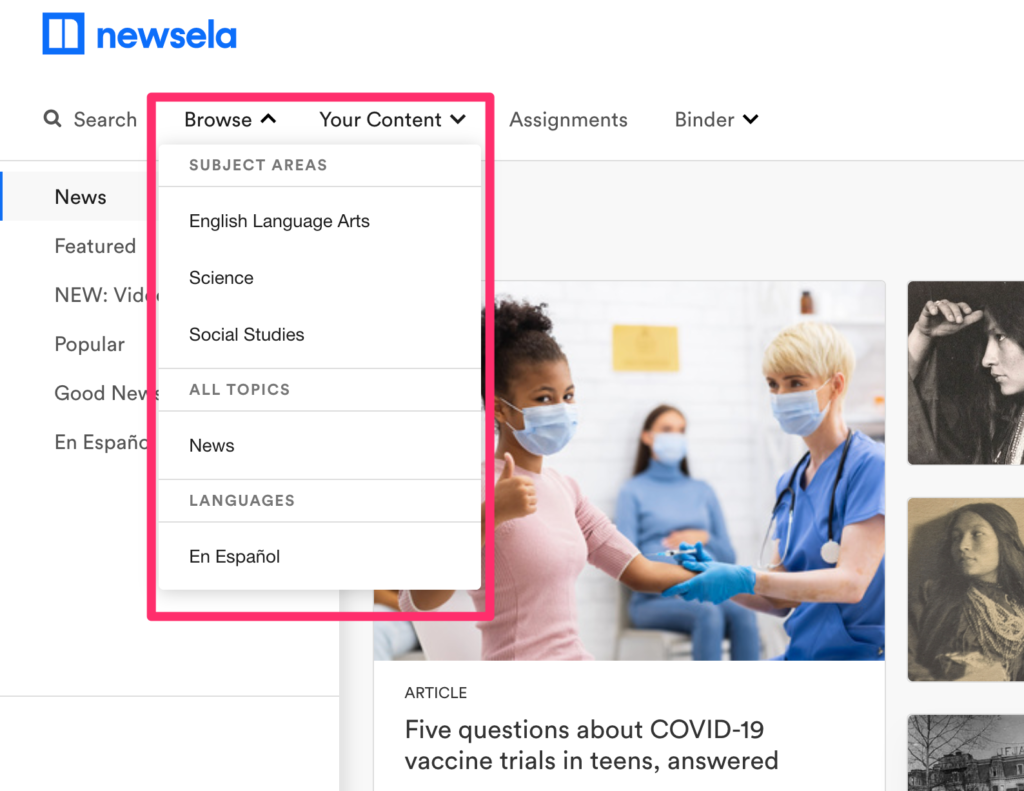I happened across this article in TechCrunch describing the recent financial success of Newsela in securing funding bringing the value of the company to one billion dollars. A billion dollar company is tagged as a unicorn and there are not that many education unicorns. Financially successful companies are not always that popular with educators, but this may not be the case with Newsela which has focused on online content as an alternative to or a supplement for textbooks. As is the case for many online educational companies Newsela has done well during the pandemic and is ideal for online situations.
There are both free and Pro versions of Newsela so which an educator chooses likely depends on how extensively they want to make use of the service. To me, the most interesting feature of Newsela is that individual articles are provided written at different levels. I don’t know if the following captures the methodology well or not, but it may help explain what this looks like. The first paragraph is from the most basic level and the second at the next to most advanced level. Levels don’t necessarily map to each other in this manner, but the developers make a serious effort to present the same core of ideas. The idea is that educators can assign the same reading to a class of students differing greatly in their reading competence and still have a class discussion about the content.
In 1900, Zitkála-Šá began writing about her life. As a child, she wrote she was “as free as the wind that blew my hair.”
Yet in 1900, as she began publishing autobiographical essays in some of the nation’s leading literary magazines, she described her childhood self as a free-spirited girl empowered by her single mother: “I was as free as the wind that blew my hair, and no less spirited than a bounding deer. These were my mother’s pride — my wild freedom and overflowing spirits.”

I tend to categorize Newsela as a tool to differentiate reading instruction which it obviously is, but reading to learn is part of pretty much all content areas and when the providers argue they want to offer an alternative to textbooks and you explore the content areas offered, you can see what they mean.
![]()

You must be logged in to post a comment.